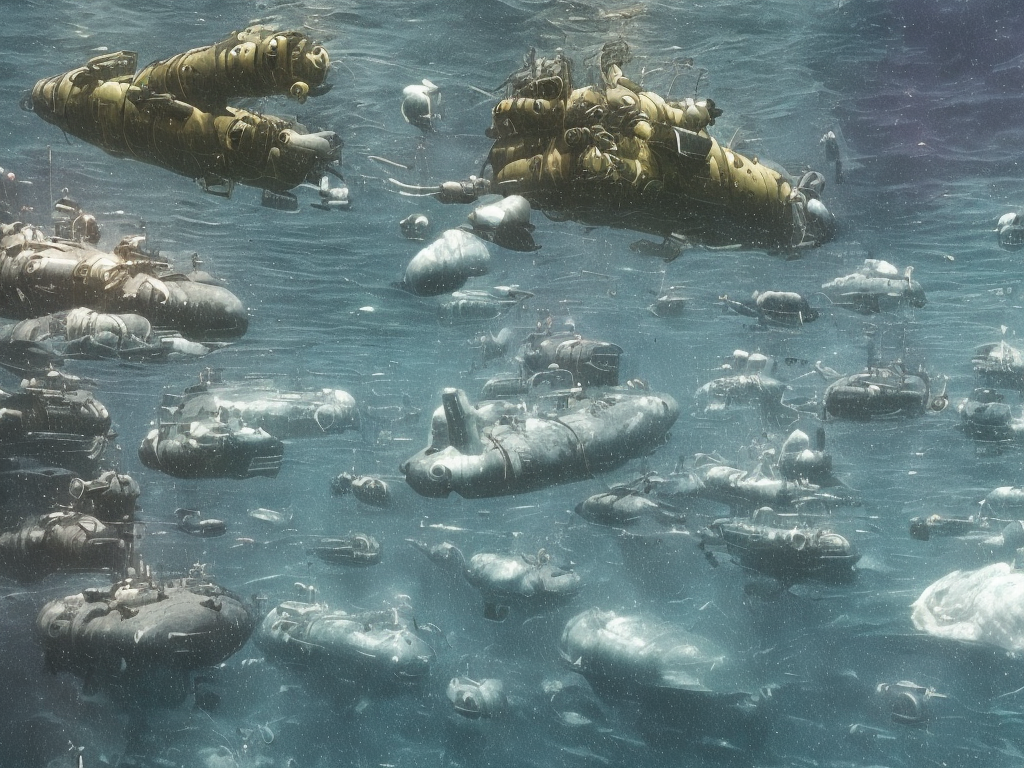
Submarines and submersibles are two types of underwater vehicles that have become increasingly popular in modern times. However, many people tend to mix up the terms or use them interchangeably. The truth is that while they might share some similarities, submarines and submersibles are very different machine constructs with separate uses and capabilities. In this article, we will explore the differences and similarities between submarines and submersibles.
Submersibles:
A submersible is a small underwater vehicle, typically operated by a crew of only one or two people. They are designed to work in shallow waters close to the surface, with an operating depth not more than a few hundred meters. Submersibles are very versatile machines used in a myriad of applications such as research, exploration, and military missions.
Research Submersibles:
The primary role of research submersibles is to investigate deep-sea features not easily accessible to humans. Besides, they are used to gather samples of plant life and underwater creatures, perform sonar mapping, or retrieve lost or damaged equipment that may have fallen into the water. The most common type of research submersible is the remotely operated vehicle (ROV), a machine controlled by a human operator from the surface via an umbilical cord, carrying sensors, cameras, and sampling equipment that gather critical data. ROVs are always tethered to the research vessel due to their limited range.
Exploration submersibles:
Exploration submersibles are relatively small submarines deployed to perform underwater investigations beyond the reach of research submersibles. Like their research counterparts, they can take significant measurements, photos, and samples or marine life, but they are also capable of remaining underwater for extended periods. They are small and easy to transport and are frequently used by marine biologists, geologists, and oceanographers.
Military submersibles:
Military submersibles are highly specialized submersibles used for reconnaissance, infiltration, and special missions. They are not particularly large, but they are equipped with advanced navigational equipment, including sophisticated sonar systems that allow them to detect enemy vessels or other underwater threats.
Submarines:
A submarine, on the other hand, is a large and complex machine used for traveling underwater and carrying out military operations. Unlike submersibles, which are small and typically operated by only one or two people, submarines are more significant and have a crew of about 100 people.
Military submarines:
Generally, military submarines are classified based on their design and operational purpose, but they all have one thing in common: they are all designed to travel underwater. They are also heavily armed and equipped with advanced technological equipment, including radar, sonar, and other detection technologies that allow them to maneuver in the depths undetected. The primary role of military submarines is to attack enemy submarines or ships, protect their own, or carry out surveillance and reconnaissance operations.
Civilian Submarines:
Civilian submarines are often quite a bit different than their military counterparts. Instead of being focused on military capabilities, civilian submarines are designed for entertainment or exploration purposes. Tourist submarines, for example, are used to bring tourists closer underwater, where they can observe marine life. They have large windows that allow tourists to see the underwater world outside. Similarly, research submarines are employed to research marine life and improve our understanding of the underwater environment.
Although both submarines and submersibles transport people or equipment beneath the water surface, they are two distinct vehicles with different designs, functions, and capabilities. The primary difference between the two is their size, structure, and operational purpose. Submersibles are smaller, open-air vessels, and primarily designed for research and exploration or commercial applications like discovering oil, identifying underwater resources, and inspecting submerged structures. Submarines, on the other hand, are lager, closed-air vehicles with a wider range of motion, more advanced features, and are mainly used by the military.
In conclusion, the differences between submarines and submersibles are vast and obvious. Submarines are giant, well-armored, and heavily powered mechanically, while submersibles are far smaller, agile, and flexible. Although both vehicles are fascinating machines with similar characteristics, they are not interchangeable. Even though most people will never ride or commandeer either vehicle, it's vital to understand these differences better so that we all can appreciate their importance in research, exploration, and military operations.
 Self-Instruct
Self-Instruct